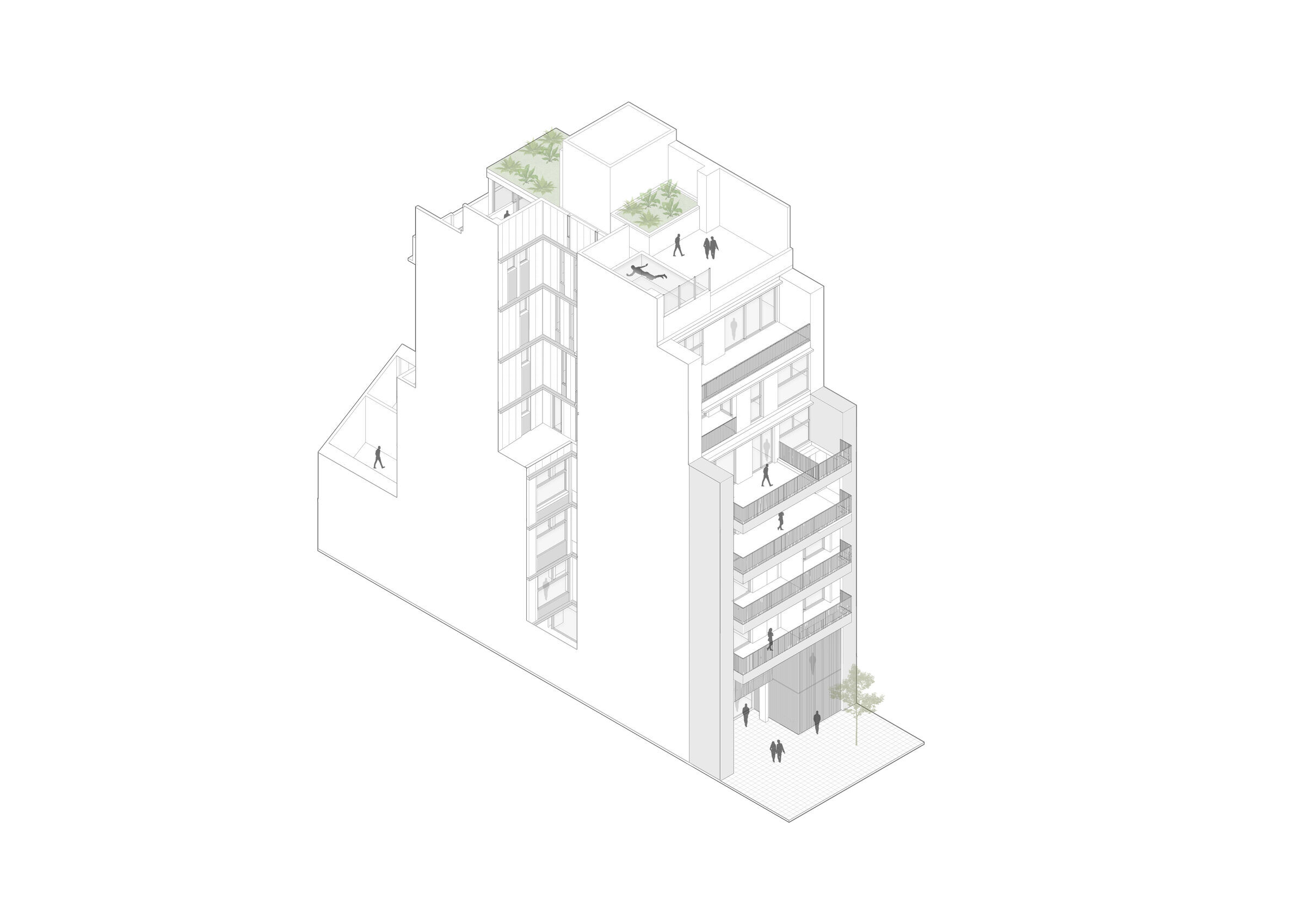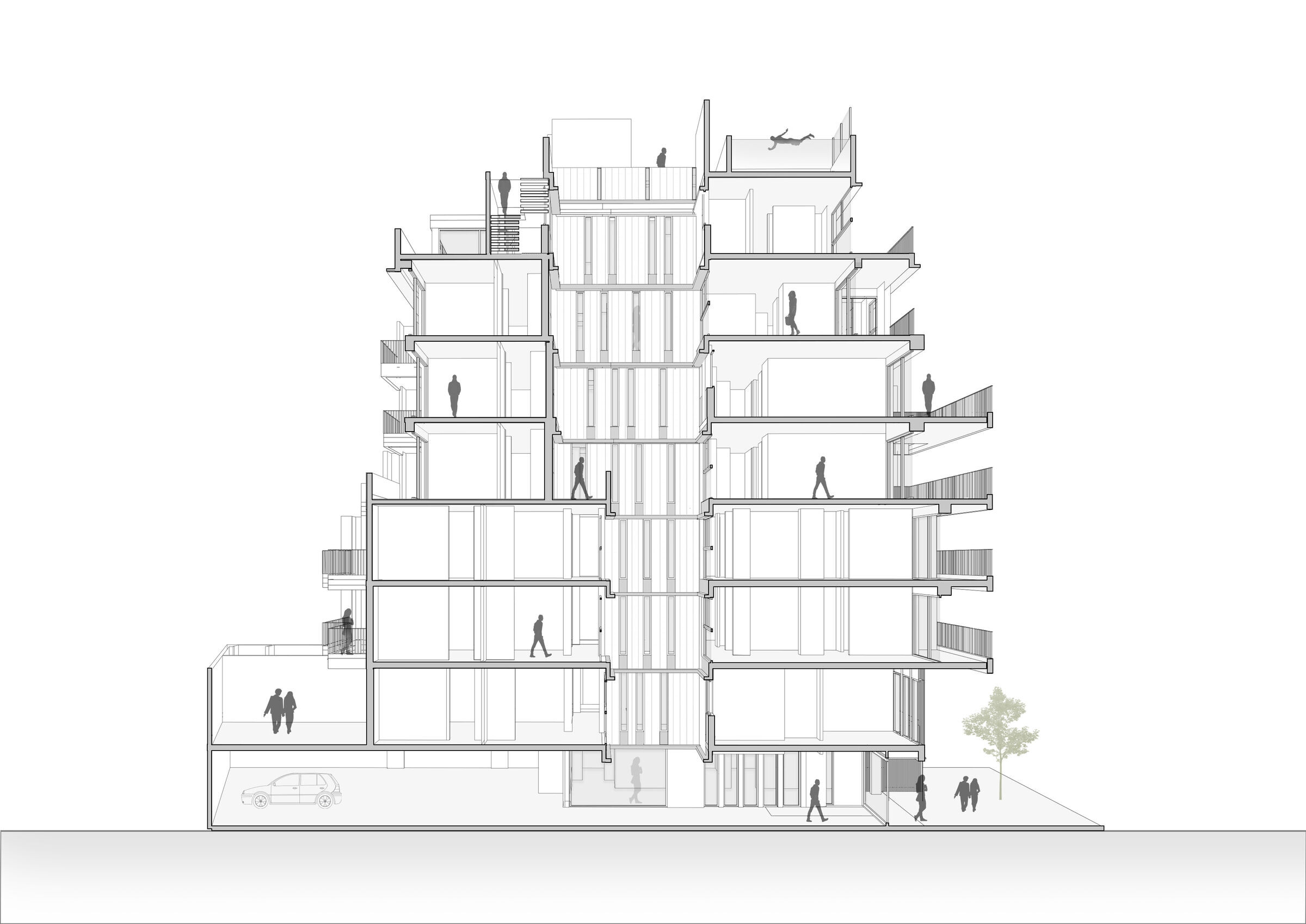Gamarra 1245 arises as an architectural response to two different searches by the project team: on the one hand, the integration of a medium-scale building volume in an immediate environment that is heterogeneous in itself, in terms of its density; and on the other hand the will to produce in the same volume a contemporary architectural reading but fundamentally of spatial quality. Located on a piece of land with irregular dimensions of 8.66 meters in front, the building complex is made up of 18 flats and large common spaces for their collective use. Product of the typological diversity of the neighbourhood, the main protagonist is the intentional void, trying to achieve the best orientations for sunlight and the generation of long visuals. The design synthesis is made up of the generation of two solid volumes linked by a slit that regulates public spaces for circulation and windows of the units. Consisting of a neutral and pure facade facing the city in front. The order of a regulated staggering in order to profitably capture the sunlight from the East and North orientations is the main protagonist on its rear façade.
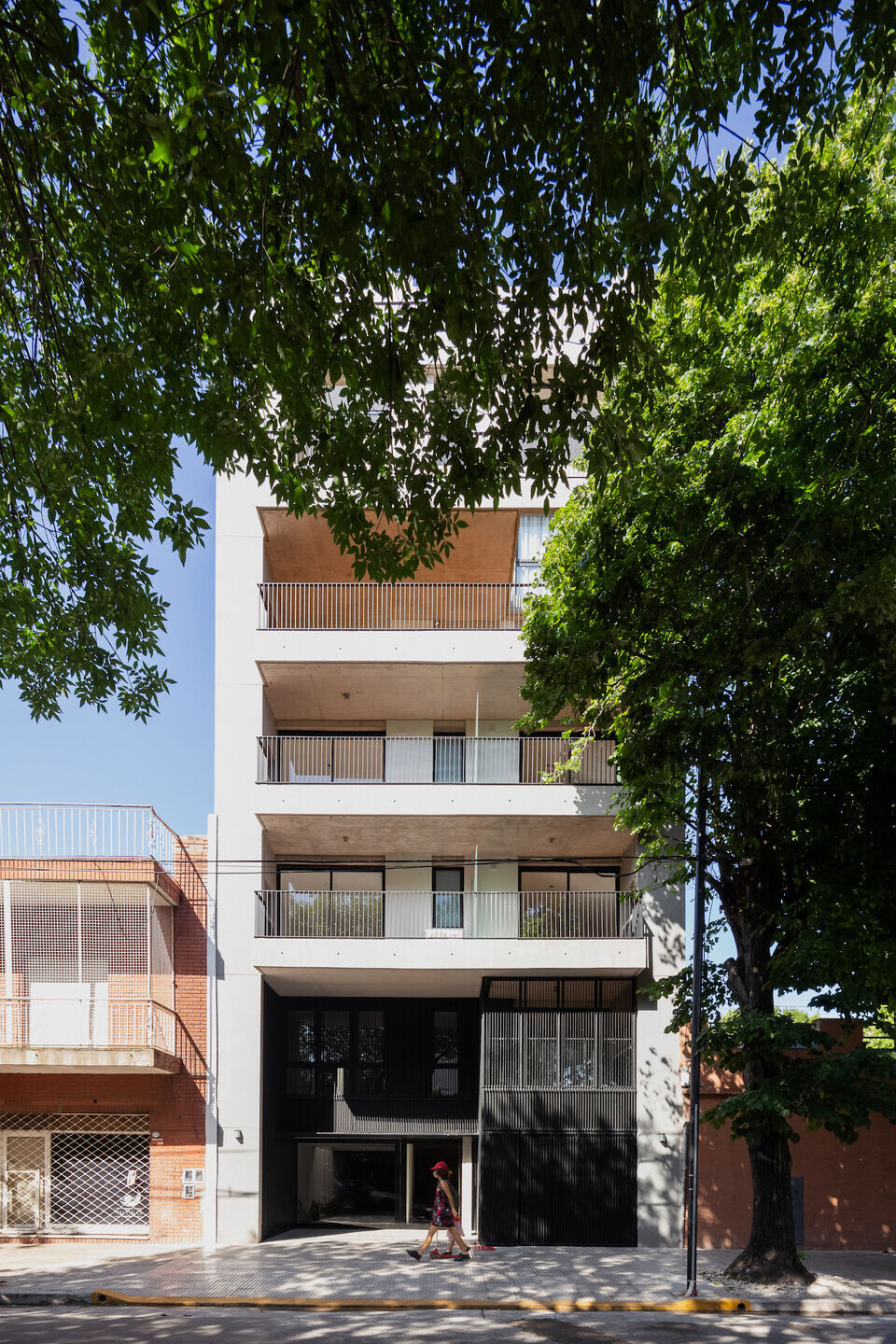
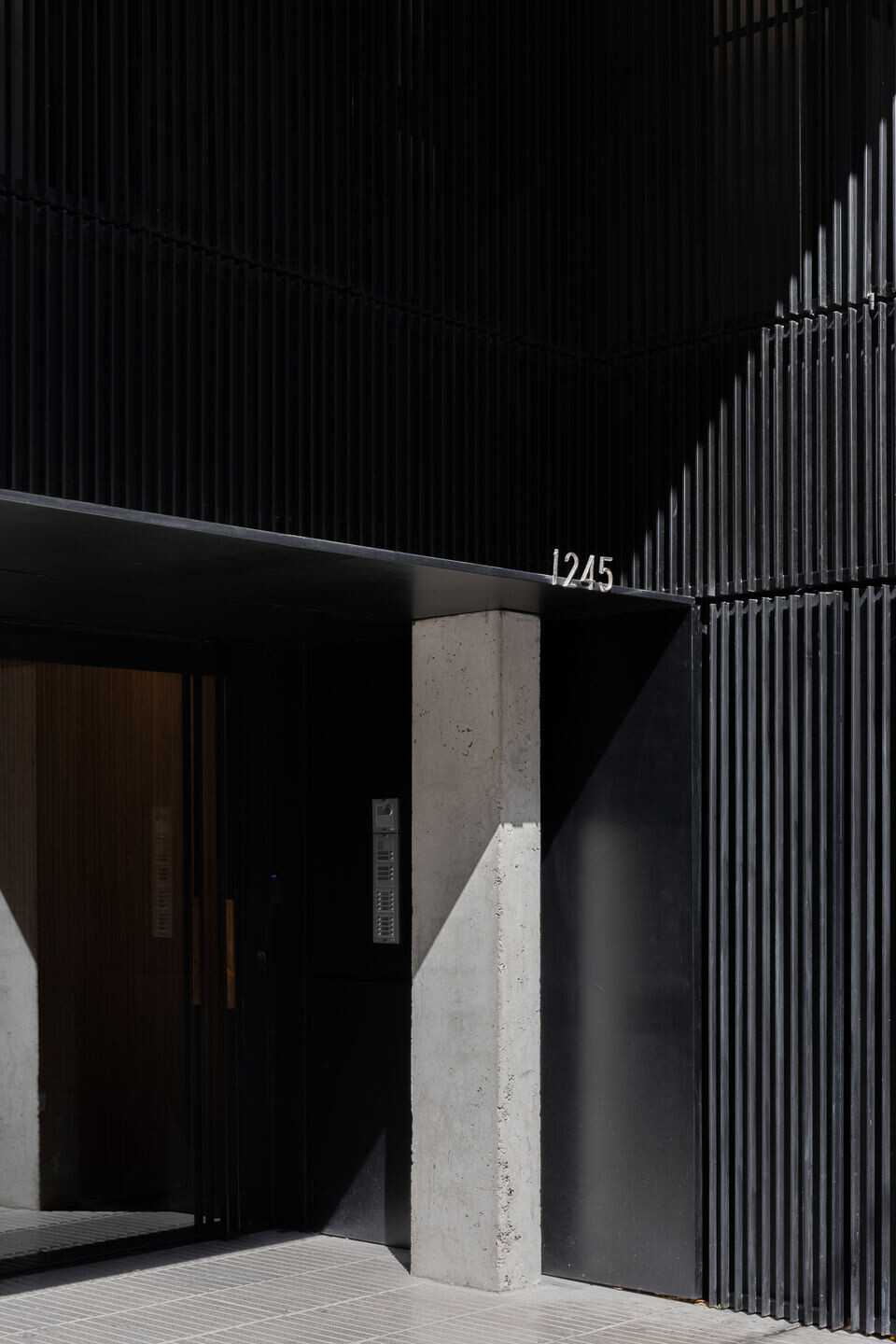
“The complex has a mixture of typologies along eight levels knowing how to satisfy the needs of current living, prioritizing the right caliber between interior spaces and expansions of each unit.” Projectors stand out.
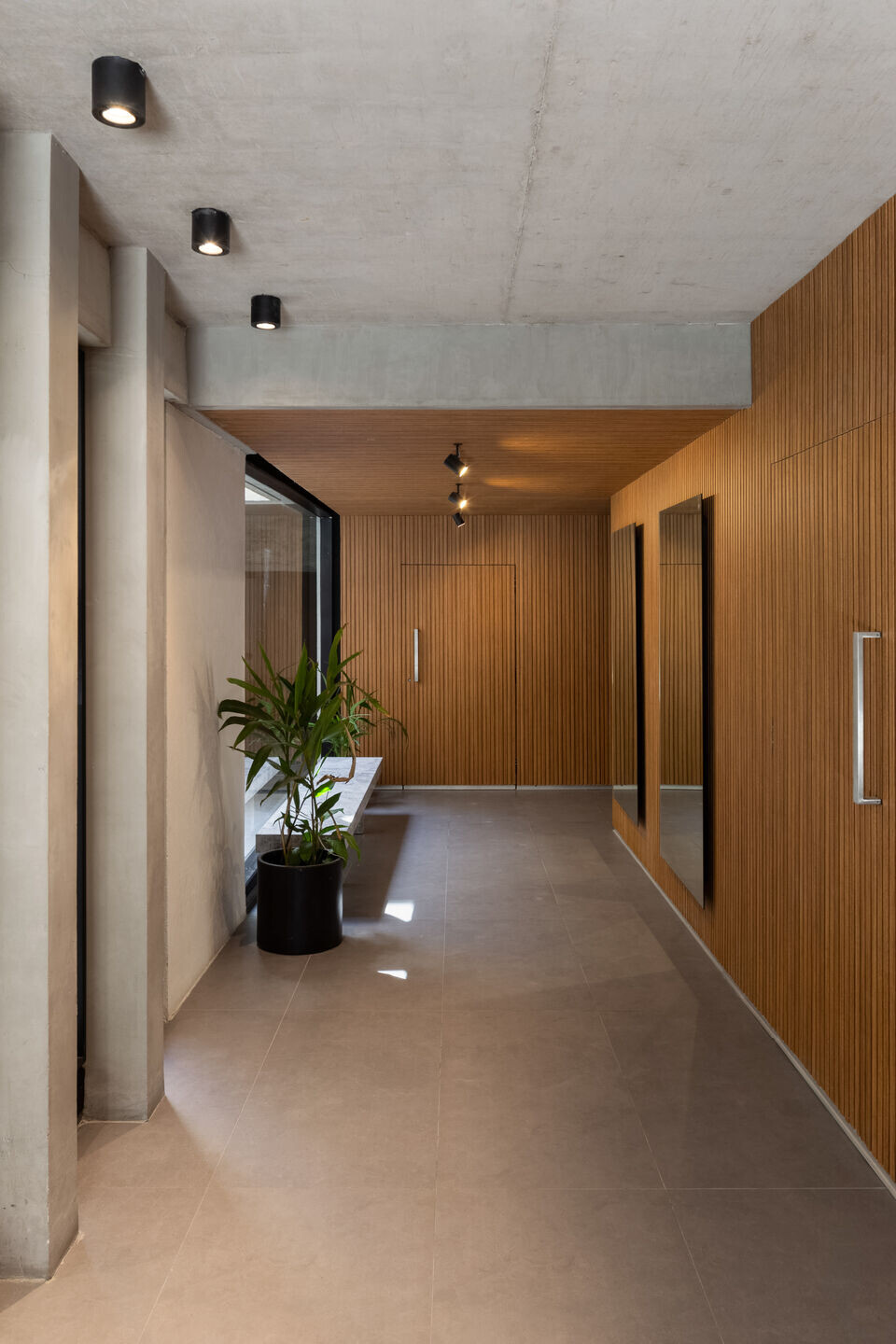
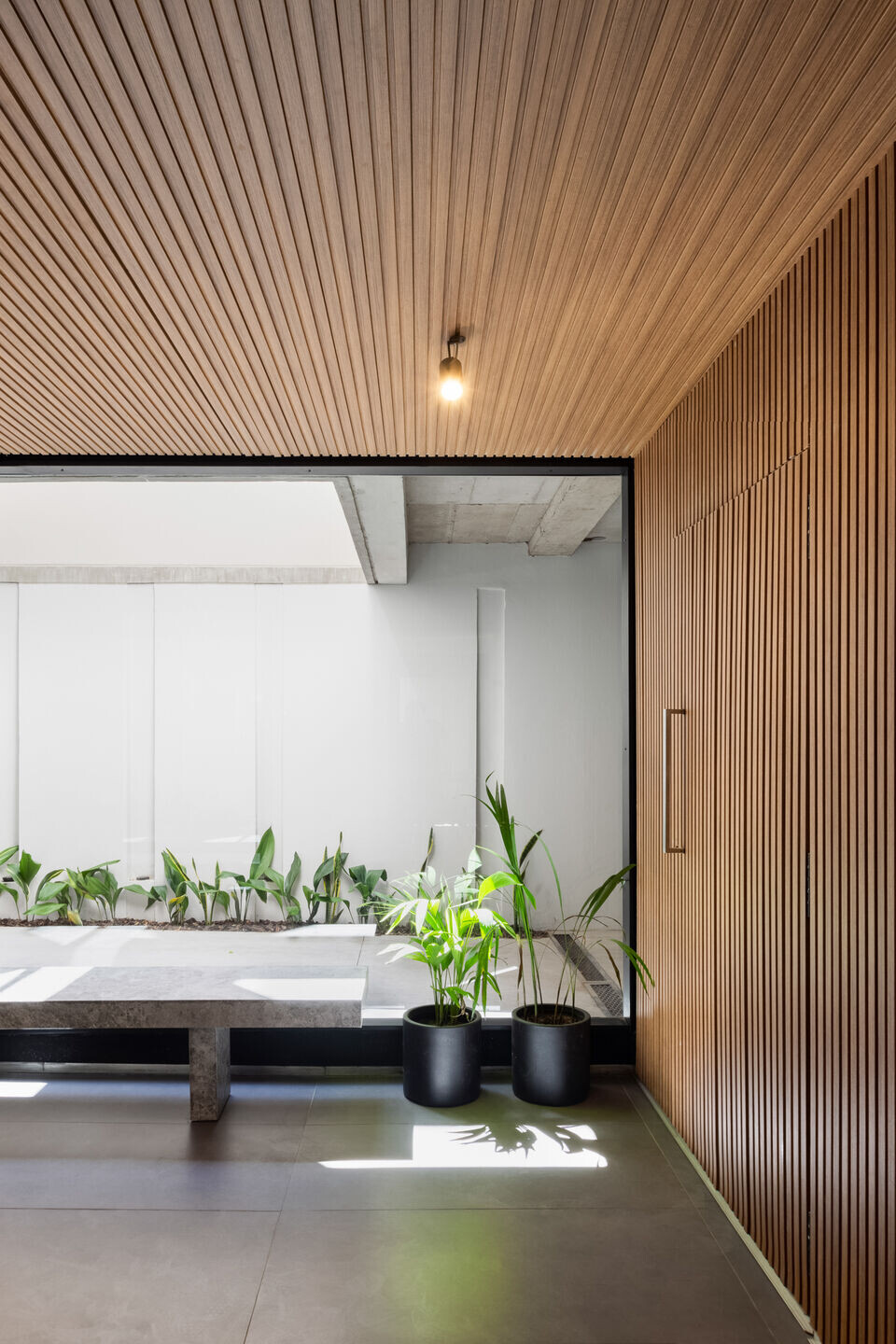
Under a semi-covered eaves made up of the volume of balconies, access to the building is generated, intending a route that allows exploring different materials, expressing distinctions between the public and private spheres. After a visually permeable access from the material, both vehicular and pedestrian accesses can be identified. It is from the pedestrian that the route is nourished by intention and lighting until finally culminating in a set of sectors for common use located in the last two levels of the building. These sectors extend organically on both levels connected by a stairway that is the protagonist both from the formal aspect as an element that connects spaces, as well as from the material aspect. On the seventh floor you can find a covered area for common use, identifiable by its outstanding volumetry and its own expansion; and on the eighth level, a pool and solarium sector is developed that functions as the top of the complex, being the highest accessible point, inviting pause and contemplation.
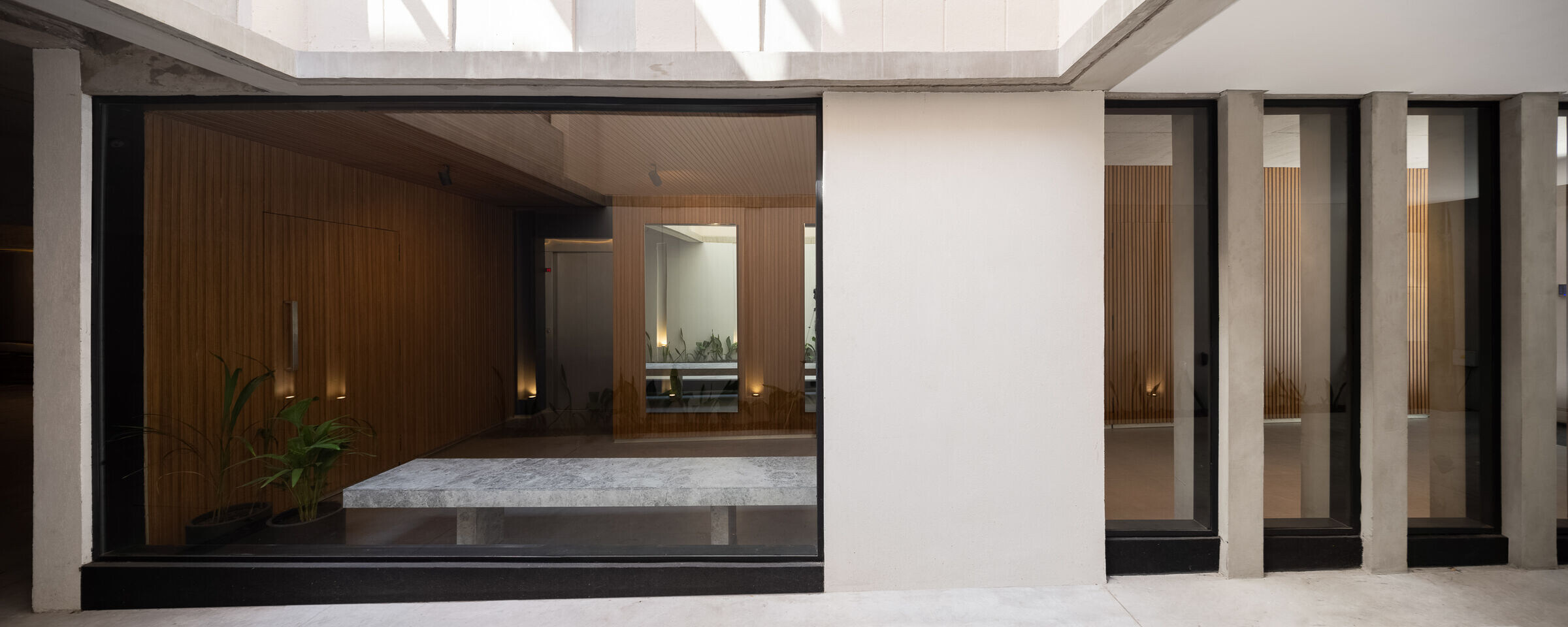
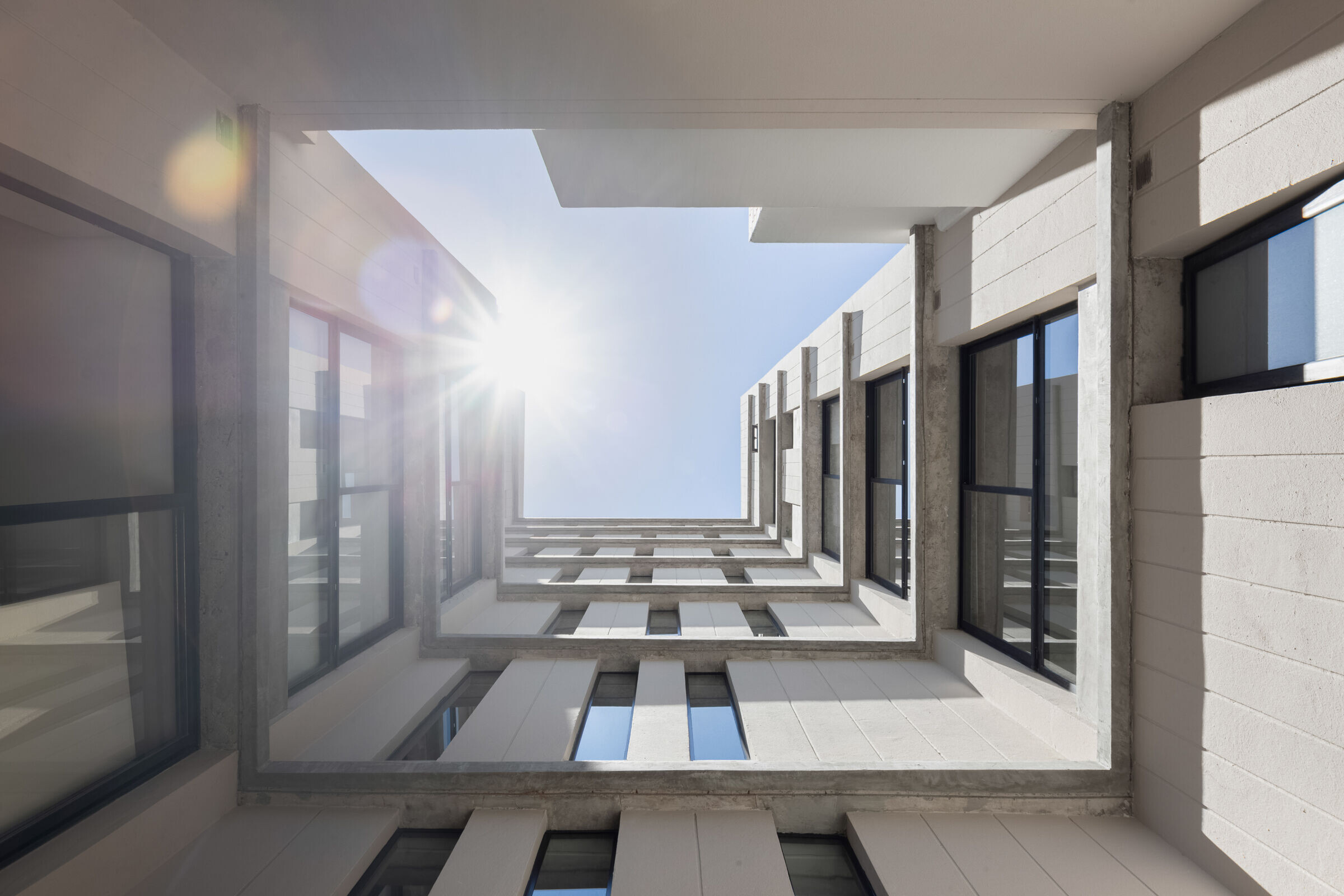
Each type of unit and its location in the complex was the product of taking advantage of the opportunities offered by the new urban code of the City of Buenos Aires.
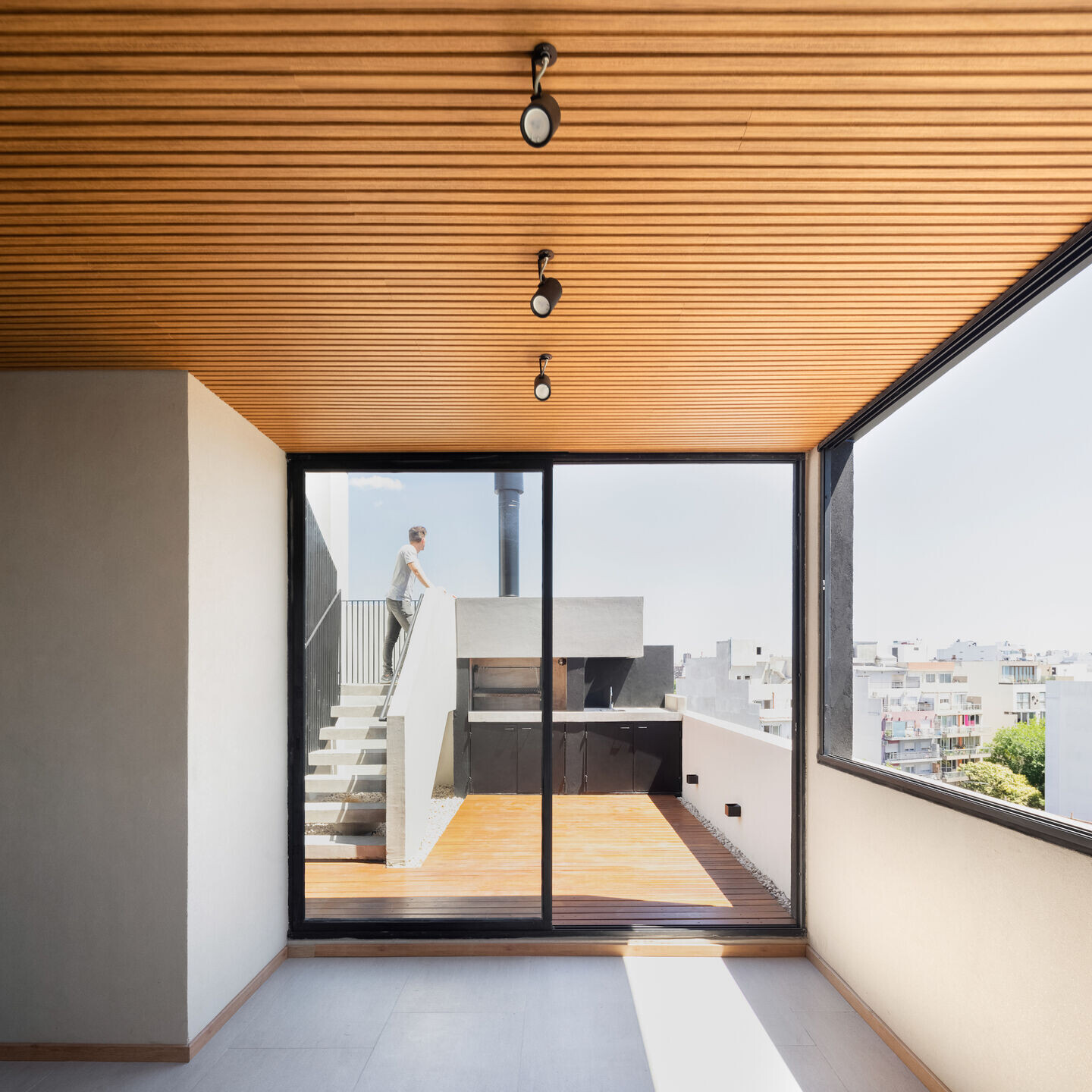
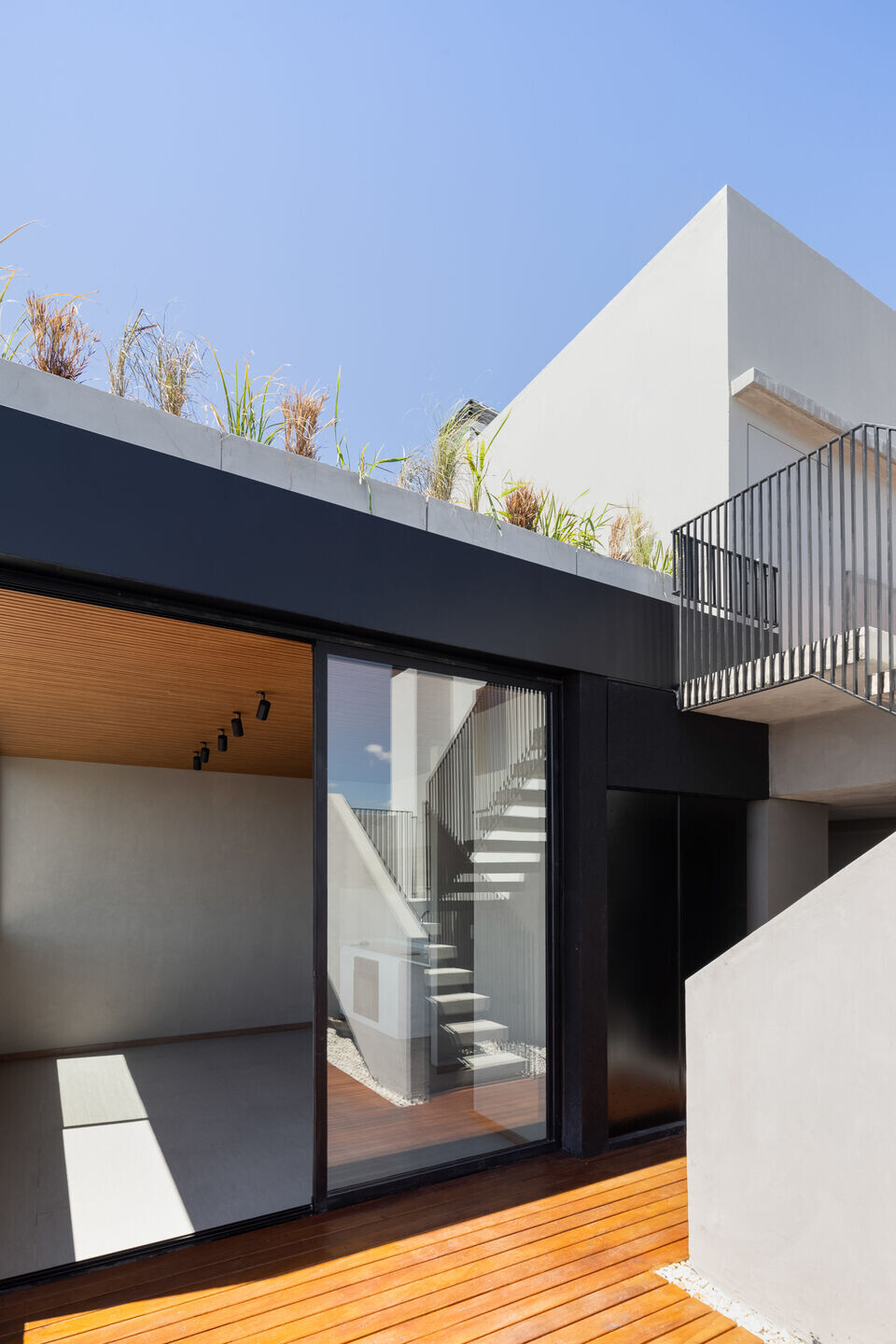
The first three levels of the building consist of one-room units and one divisible room, equipped with comfortable kitchen spaces and large sanitary facilities. The four upper levels are made up of two- and three-room units, effectively responding to regulatory withdrawals and generating situations of porosity that enhance the use of the exterior spaces of each unit. Malleable and easily usable spaces are generated in constant dialogue with the domestic and the urban.
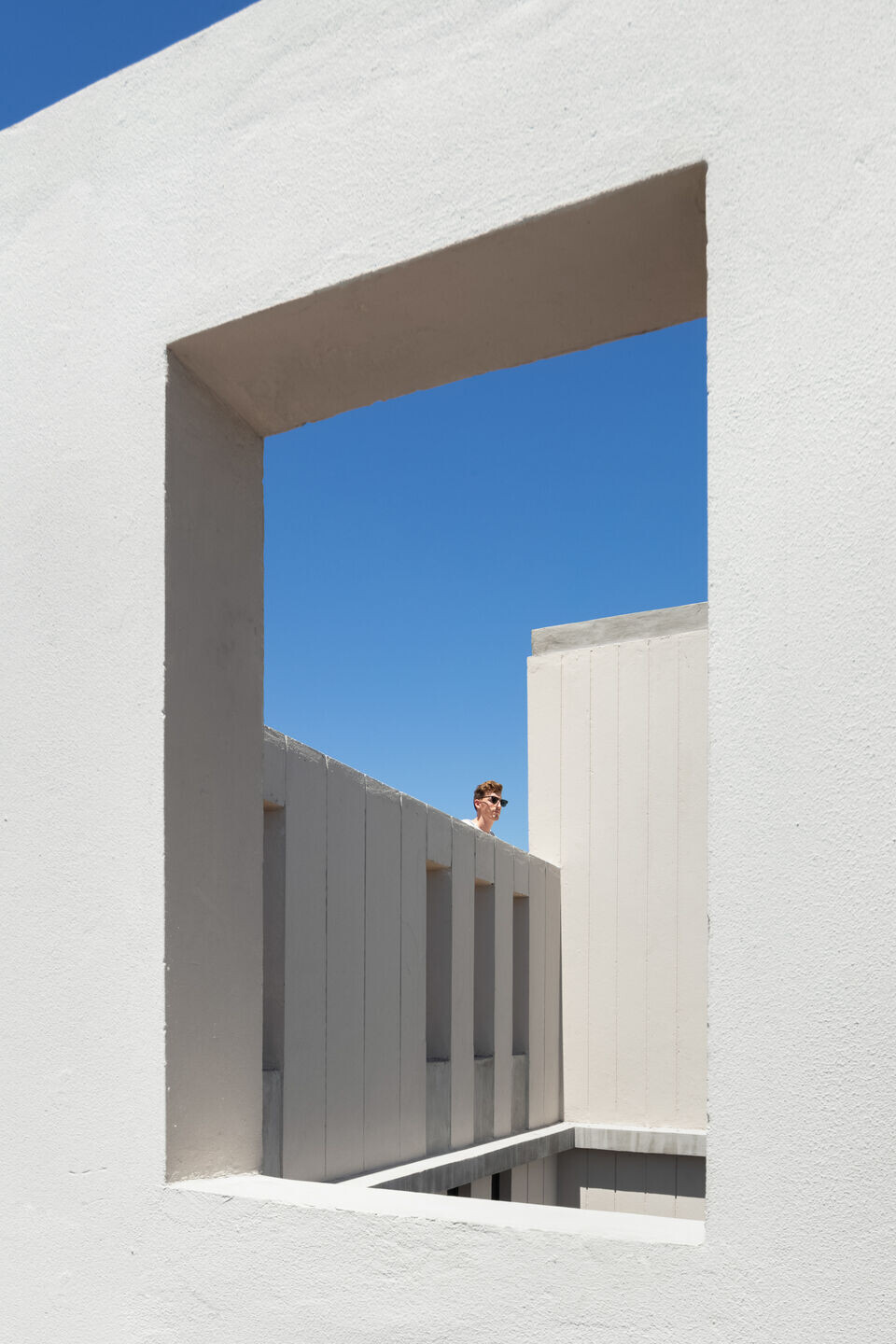
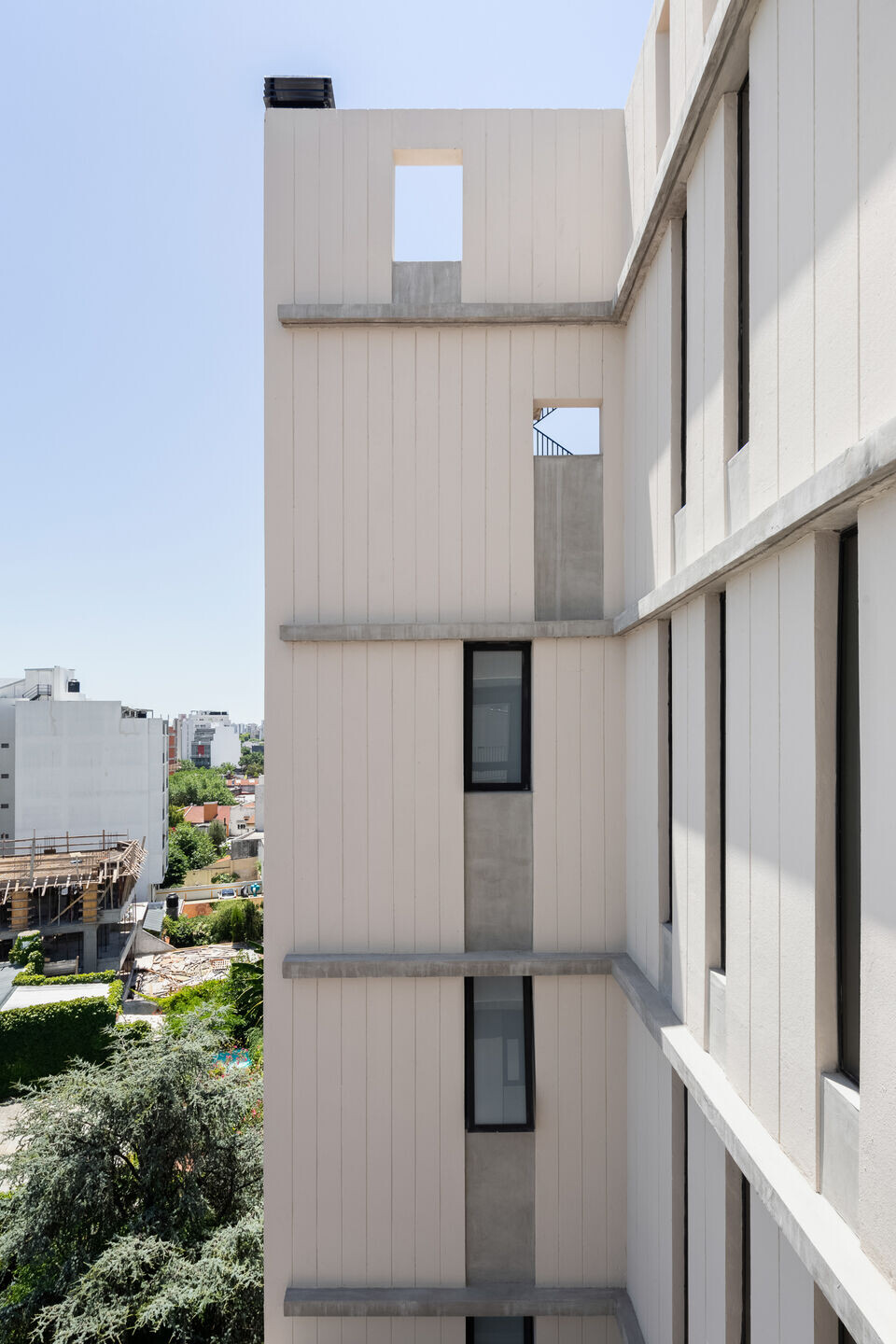
As for the materiality and interior distribution, the purity of the spaces is given by chords of wood tones on floors, cupboards and exterior wood deck flooring; while the visuals given by the large windows are framed by black aluminum carpentry. The exterior spaces are regulated by the simplicity of projecting volumes of exposed concrete that contain service sectors and grills for each unit.
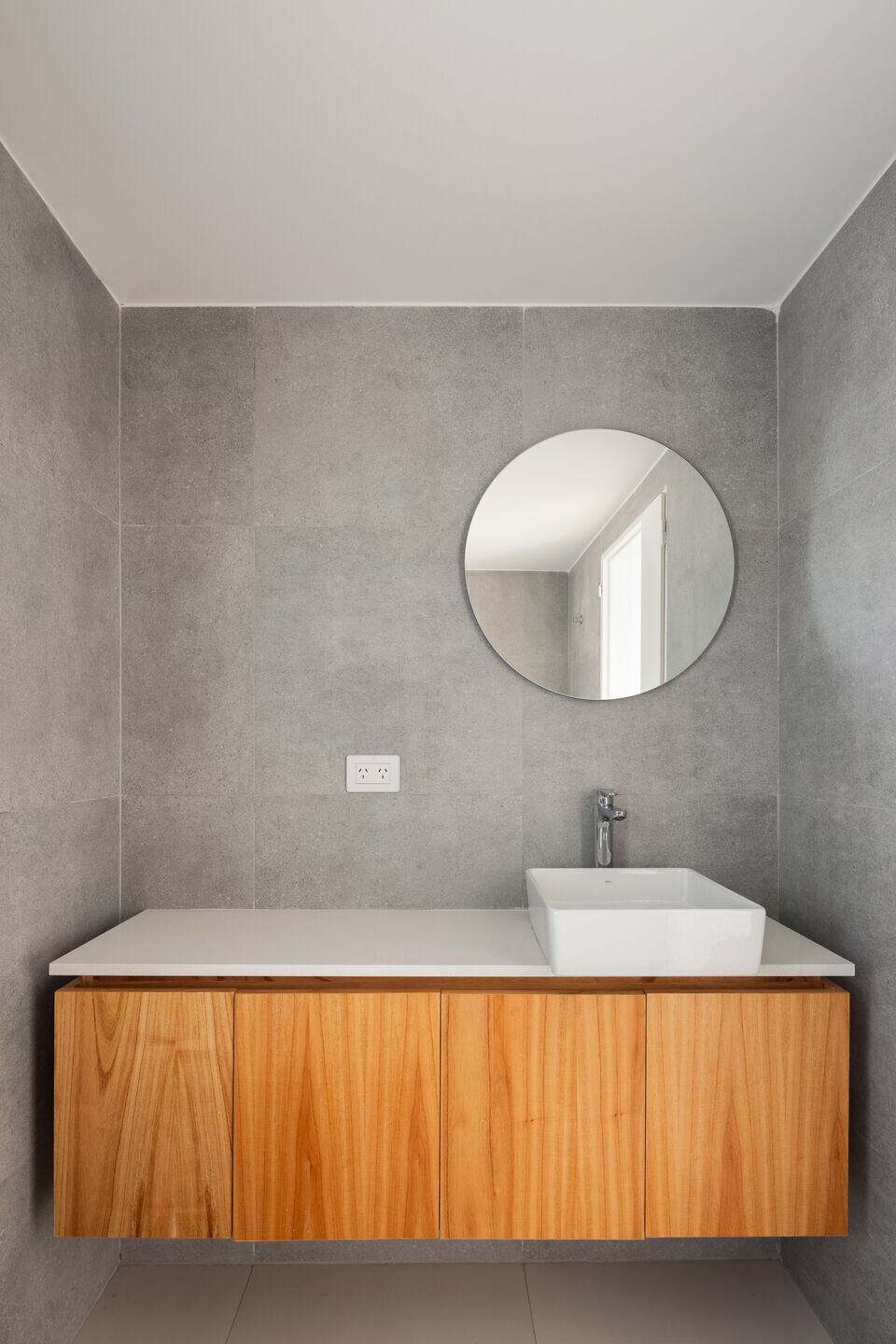
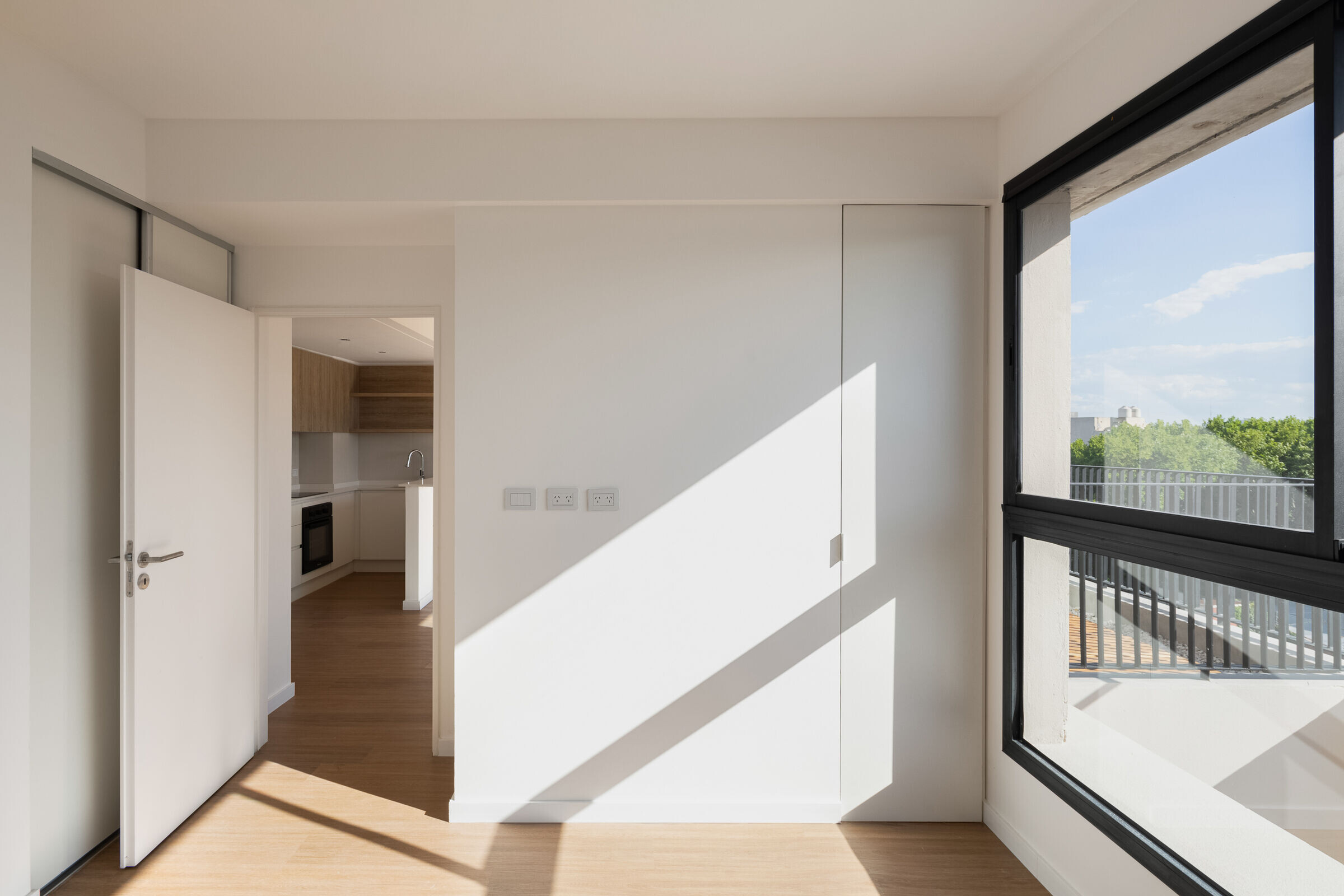
The synthetic and refined image of the complex together with controlled transitions towards urbanity allow this building to be harmoniously placed in a heterogeneous fabric awaiting growth and new interactions from the building.
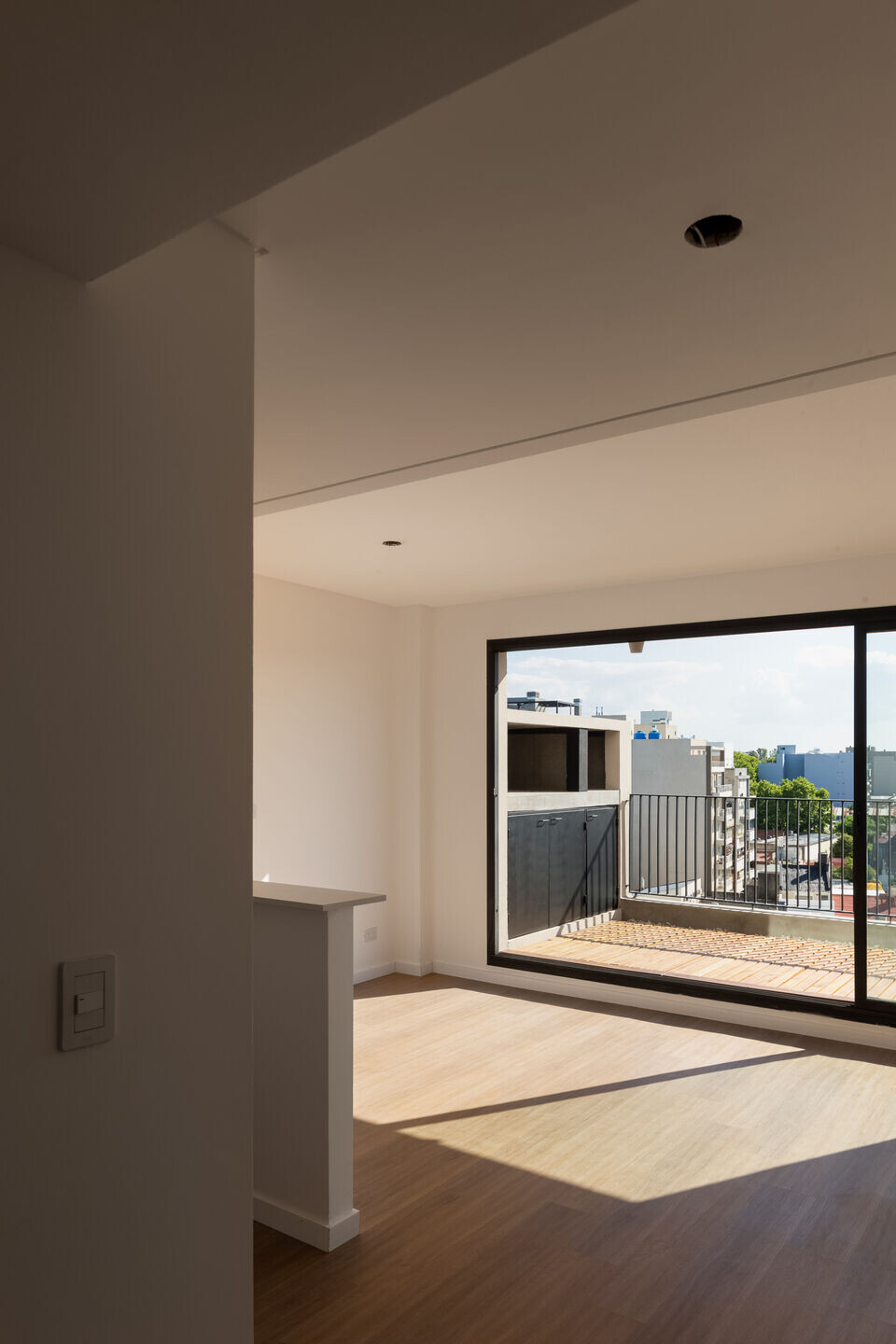
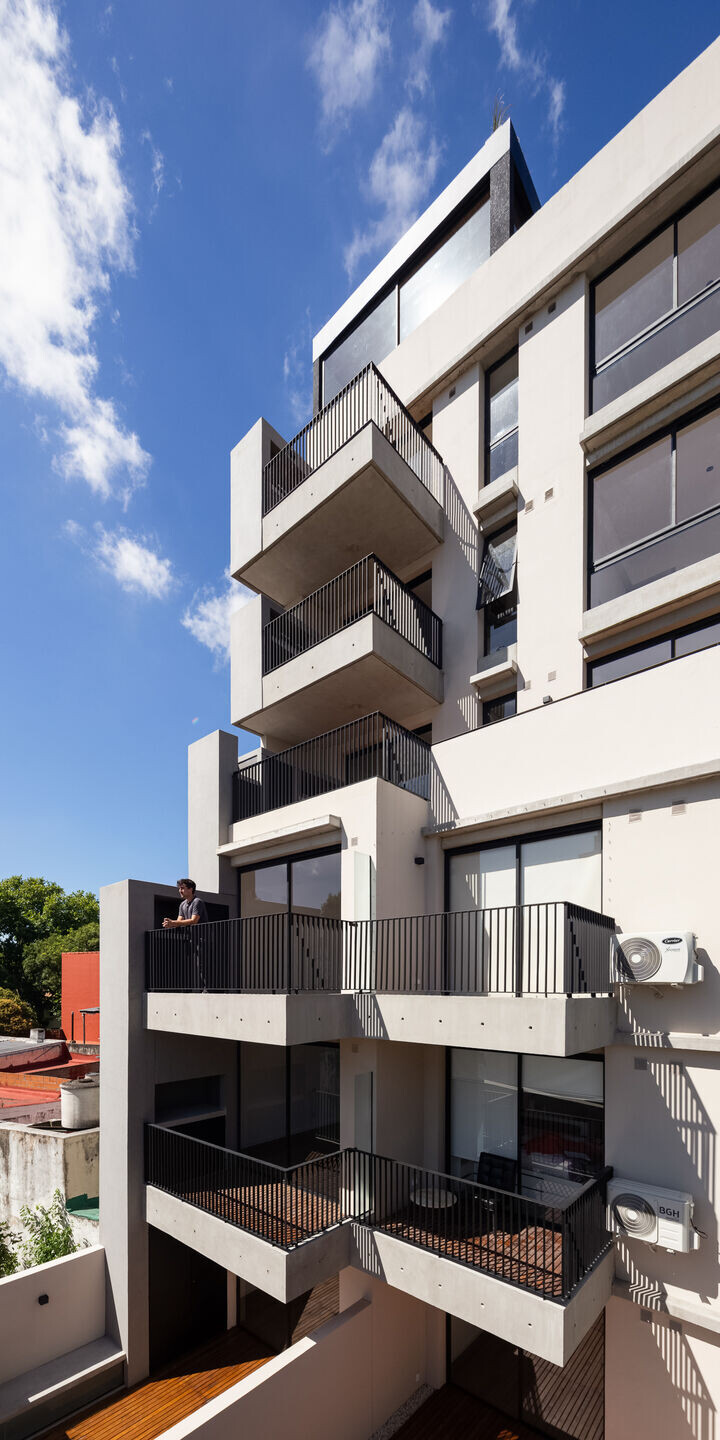
Team:
Architects: LST Arquitecture
Photographer: Ramiro Sosa
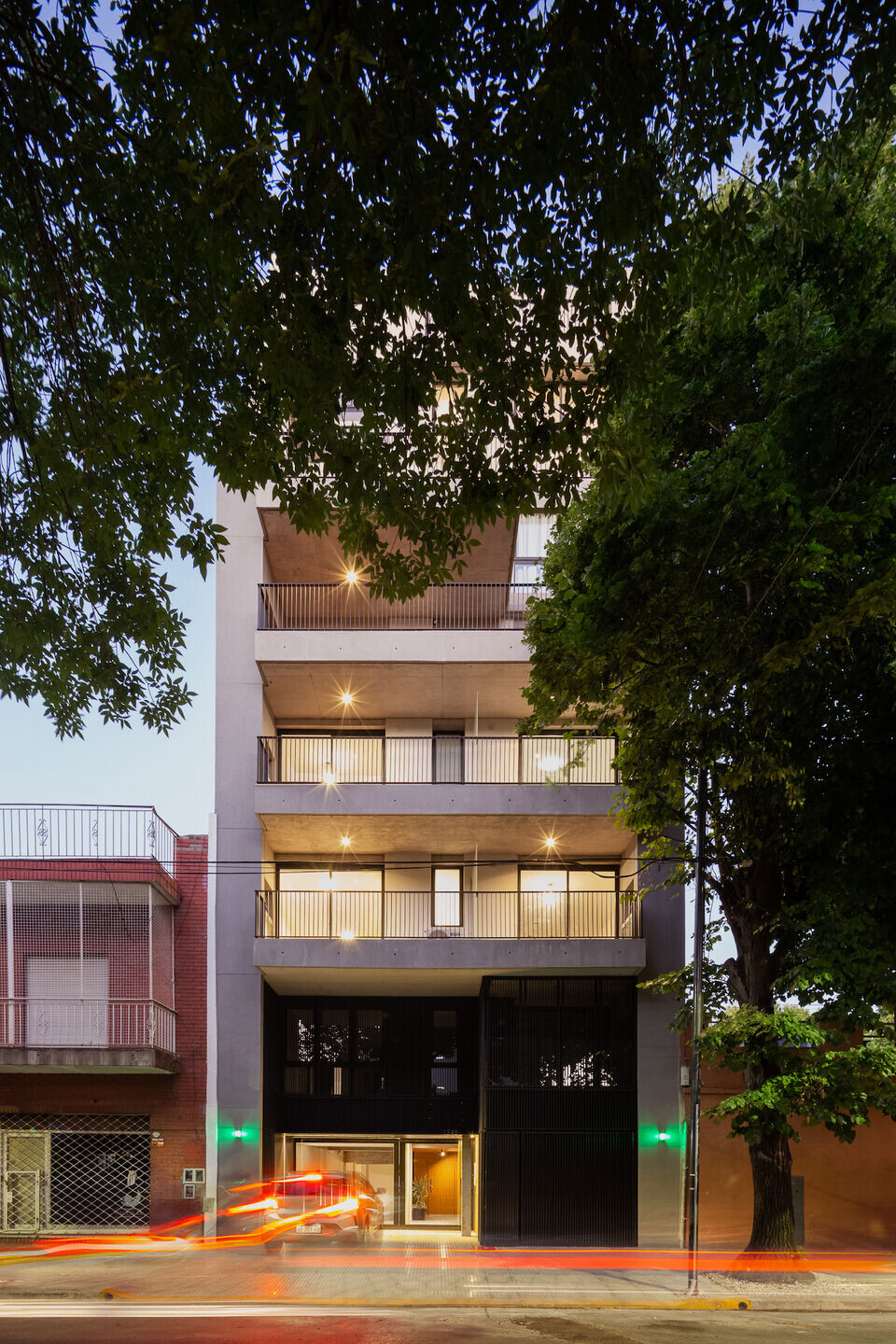
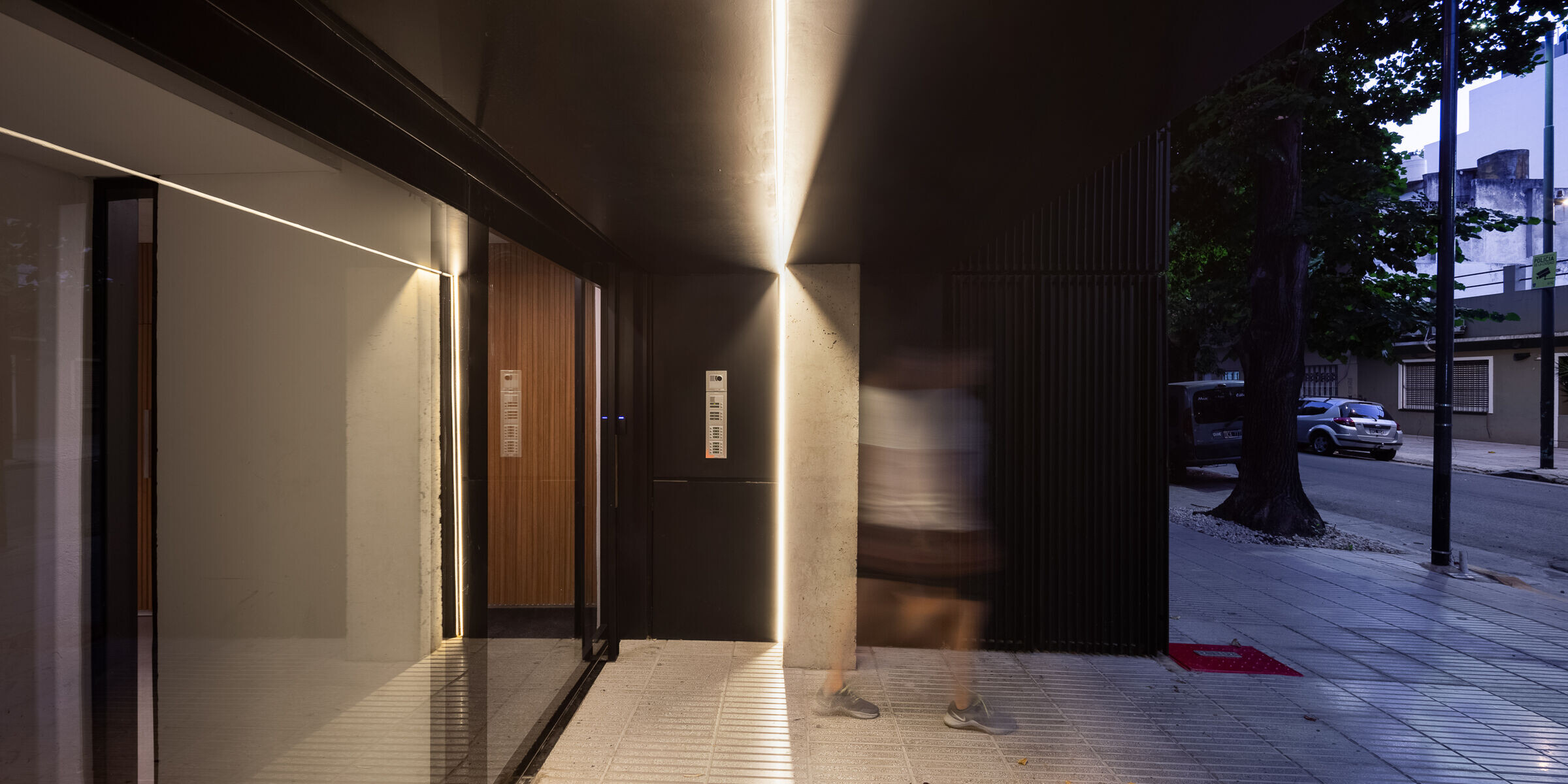
Materials Used:
Floors and Coatings: Ilva, Eliplay, The flooring Company
Marmoleria in Silestone, Marmoleria Bustamante
Aluminum carpentry: Forti Openings
Blacksmiths: Adrian Salazar, Forti Openings
Glass and mirrors: Forti Openings
Concrete and masonry: Rito Construcciones
Waterproofing: Eydisa
Carpentry furniture: Solovey Equipments
Structural Steel: Armaferro
Plate doors: Placcor, Potenza
Thermomechanical Installation: Thermobars
Paint: Indumap
Foundations: Piles and Anchors
Plasterwork: Segnana
Faucets: Piazza
Vitroceramic cooktops: Mad Comercial
Electric ovens: Liliana, Macoser
Equipment: Nut Deco
Electrical Installation: Sevel
Gate Automation: Falsone Gustavo & Lionel
